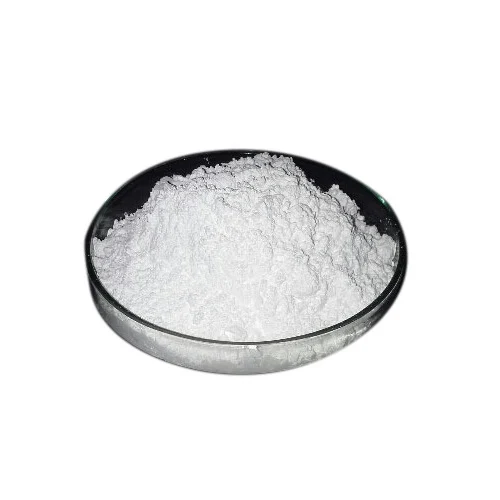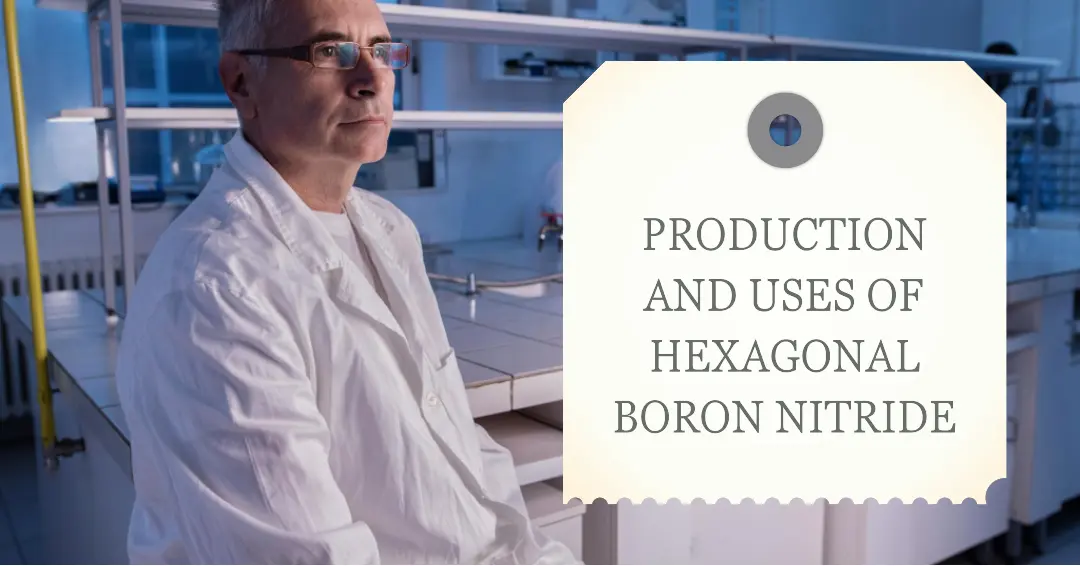Boron Nitride (BN) is a crystalline compound that is produced synthetically using Boron and Nitrogen. It is a thermally and chemically resistant refractory compound. It can be produced in two crystalline forms Cubic Boron Nitride (cBN) and Hexagonal Boron Nitride (hBN). It is an industrial ceramic compound and is used in applications like electrical insulators, cutting tools, high-temperature equipment, metal casting and more.
The Hexagonal Boron Nitride is known for low electric conductivity and high thermal conductivity. It is a white ceramic material with a layered structure similar to graphite and is also known as ‘White Graphite’. It is white coloured powder and slippery in nature in physical form. The size of the flake of Hexagonal Boron Nitride powder varies from hundreds of nanometers to tens of microns.

The hBN has properties like low thermal expansion, microwave transparency, low dielectric constant, easily machined-non abrasive, non-toxic, chemically inert and does not get wet by most molten metals. It has main properties like good lubricity, heat resistance, thermal conductivity and electrical insulation.
Applications of hBN
- Due to its layered structure, it is mechanically weak but it has excellent thermal and chemical stability and hBN ceramics and coatings are used in high-temperature equipment.
- It is one of the best materials to date which is thermally conductive. It is used in various hazardous applications in the thermal industry.
- It is used in corrosion-resistant and anti-oxidation protective coatings. It is inert and is used in anti-friction coatings.
- It can be used to sense gas like ammonia and ethanol. Layers of hBN are used in gas sensors. When the sensor is exposed to air the oxygen molecules get ionised because of the hBN conducting band and the resistance increases. When it is exposed to ethanol the resistance reduces. This can be used to check the various concentrations of ethanol.
- Due to its properties, Hexagonal Boron Nitride powder is used as a raw material in cosmetics like make-up, foundation, eye shadow, lipstick, kohl pencils, blushers and more. It is used in sunscreen as it allows structure modification during the formation of different phases and can control a specific area.
- The hBN has an anisotropic structure and it has interesting optical properties. It is a good material to consider due to its optical characteristics.
- The hBN can be used in alloys, ceramics, rubbers, resin plastics and other materials to give them a self-lubricating property.
- Due to its excellent dielectric and thermal properties, it is used in electronics like microwave transparent windows, a substrate for semiconductors, structural material for seals and more.
- It is used in laser printers and xerographics as a charge leakage barrier for a photo drum.
- It is used in infrared chemical sensors, ultraviolet emitters, neutron detectors, quantum communications and more.
Synthesis of hBN
The hBN can be produced using several methods like mechanical separation, chemical vapour deposition, an aqueous solvent thermal synthesis and more.
The hBN can be obtained by reacting Boron Trioxide, Boric acid with Ammonia in a Nitrogen atmosphere. At the molecular level, it is a platy powder consisting of hexagonal rings that slide past each other.
It can be produced by using classic high-temperature synthesis routes and a direct combination of Boron with Nitrogen.
Some applications require a high degree of hBN crystal perfection and fewer impurities. For this, the chemical vapour deposition (CVD) method is used. In this, a molten mixture of Nickel, Chromium or Iron is used to grow crystals. This process produces hBN of the highest quality.
The growth process includes the processes of decomposition of precursors, decomposition and nucleation and continuous growth. For example, if Ammonia Borane is used then first it will decompose into Boron and Nitrogen under high temperatures. The Boron and the Nitrogen-containing species will deposit on the metal surface and combine into clusters. The clusters grow into larger hBN islands and finally attach to form a continuous film.
The chemical vapour deposition is a complex process and is affected by factors like the growth temperature, catalytic substrate, pressure and more. These factors can be fine-tuned to get the desired hBN film.
To get a larger size of the hBN crystals the method used is adjusting nucleation density by modifying the substrate surface. The surface of the substrate strongly affects the hBN growth.
Most of the methods are not able to meet the high yields required and the synthesis of hBN is still a challenging subject. Research has been done on the controlled synthesis method of producing high-quality hBN crystals. And the CVD method is the most promising way to grow hBN.






